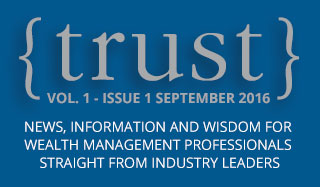Just how real are cyber threats?
By John Fetter
 Most people would say that they are concerned about the security of their financial information and the degree to which financial institutions properly defend against online attacks. This concern is reinforced by the frequency of news stories reporting on breaches and magnified for individuals of greater net worth. There is, however, a large disparity between what is perceived to be the danger and the realities of cyber threats.
Most people would say that they are concerned about the security of their financial information and the degree to which financial institutions properly defend against online attacks. This concern is reinforced by the frequency of news stories reporting on breaches and magnified for individuals of greater net worth. There is, however, a large disparity between what is perceived to be the danger and the realities of cyber threats.
News, films and television have created a common perception of cyber crime. It is the domain of criminals using highly technical means to strike their prey from a dimly lit room far from their intended targets. This perception is far more dangerous than the threat it describes.
In real life, cyber crime and information security breaches run a vast spectrum in both sophistication and scope. From common identity theft to complex cyber warfare waged by foreign governments, Fortune 500 companies and government agencies report that serious attacks have doubled every year since 2007. While these statistics are sobering, what’s more alarming are the types of attacks occurring each year.
Online threats to individuals and organizations are not static. The reality of cyber security is that the threats are dynamic. Very few high net worth individuals would send money to a Nigerian prince that reached out over email. But would those same people be so discerning when using an ATM abroad or when making a credit card purchase at a major retail chain or restaurant?
In 2013, there was great alarm over the security of mobile devices and smartphones. In 2014, tremendous attention was paid to truly significant vulnerabilities affecting websites and online stores. Since the beginning of 2015, focus shifted to point-of-sale attacks and bank-targeted trojans. Whether the predictions made each year prove true or false, what is clear is that major security issues constantly change as threats evolve.
Ways to stay safe
So how does the average person protect security of his or her financial information?
Trojan and malware software affecting large banks – along with targeted attacks made by organized crime – are concerns for professionals and government agencies. As much as they may grab headlines, a person cannot take steps to protect against the possibility of these breaches. Nor should they be concerned as the affected institution frequently absorbs all liability.
The security controls most critical to all individuals, regardless of wealth classification, have remained unchanged:
- Make sure that passwords are complex.
- Try password management software to help select truly random, difficult passwords.
- Choose a security question by asking, “Is this information discoverable on Google, Facebook or Ancestry.com?”
- If so, pick a new security question or deliberately answer incorrectly.
These precautions are common, but there are some new ones for 2016. Be discerning when using an ATM, especially in public places and when traveling. ATM skimming has quickly become a significant personal security concern and may not be prevented by inspecting the card reader first. And make sure that you have replaced your credit card with one using chip and pin technology. These two steps, coupled with regular and careful reviews of your statements, will protect you almost completely from what are shaping up to be the two largest threats to an individual’s financial security.
John Fetter is the Technology Director of WealthHub Solutions, LLC, a Philadelphia-based company specializing in cloud-based, integrated business functionalities for the wealth management industry.



